Select Language
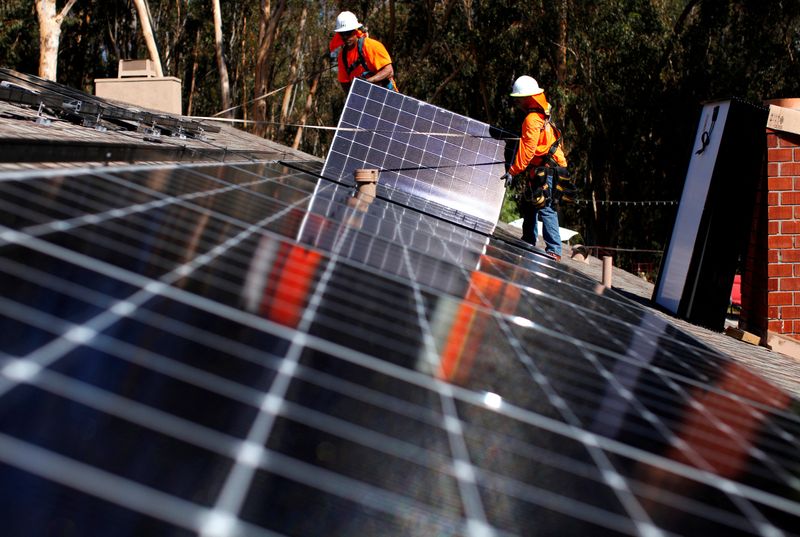
(Reuters) -U.S. jobs numbers dominate the agenda as markets brace for a choppy September, with France seeking a way through its political mess, Germany having regional polls and African leaders heading to Beijing.
Here's your guide to the week ahead in financial markets from Kevin Buckland in Tokyo, Ira Iosebashvili in New York, Duncan Miriri in Nairobi and Dhara Ranasinghe and Naomi Rovnick in London.
1/ LABOUR OF LOVE
With the Federal Reserve on the cusp of monetary policy easing for the first time in years, attention turns to the Sept. 6 U.S. employment data for clues on how aggressively the Fed might move in coming months.
Fed Chair Jerome Powell flagged it was time to start reducing interest rates, and many in the markets expect the process to begin with a 25 basis point cut at the Sept. 17-18 meeting.
Further signs of the labour market weakness that helped to roil markets in late July and early August could revive recession fears and cause investors to dump riskier assets.
Expectations of heftier rate cuts have dented the dollar, which is hovering around one-year lows, in part on expectations that imminent monetary policy easing will narrow the yield advantage the U.S. has over many developed economies.
2/ VOLATILITY
Global stocks have bounced back to near-record highs after an early August swoon driven by a Bank of Japan interest rate hike causing a feedback loop of selling and volatility. There could be more trouble ahead.
Bank of America analysts say stock market volatility tends to rise in September and October. Citi strategists reckon market expectations of future stock market swings are too low.
August's selloff was ignited as carry trades that gambled on U.S. rates staying far higher than Japan's imploded. Unsuccessful speculators sold other assets to cover losses, helping to wipe about $1 trillion off U.S. tech stocks.
Markets have since moved to a view that Fed rate cuts will support stocks and bonds, but data surprises could disrupt currency markets and potentially cause further cross-asset shocks.
3/ CHILL IN THE AIR
Summer has ended abruptly in France. Having successfully hosted the Olympics, France needs a government, and the focus has returned to President Emmanuel Macron's political crisis.
Socialists and Greens say they will not participate in further talks with Macron, who has slammed the door on a potential leftist government.
Investors, waiting for progress, have shunned French stocks.
The CAC index remains 5% below levels seen in June before Macron announced a snap election and has hardly risen this year, while German shares have rallied 12%.
But Germany has problems of its own. Big wins for the far-right AfD in Sunday's two regional elections is a headache for German Chancellor Olaf Scholz fractious coalition before 2025's national election. The economy is weak, shrinking 0.1% in Q2. The Ifo Institute president says the economy is increasingly falling into crisis.
The markets' focus on France, could soon shift to Germany.
4/ UNDAUNTED HAWKS
Bank of Japan officials have not shied away from further rate hikes despite the August market ructions as BOJ chief Kazuo Ueda's sharp hawkish shift collided with U.S. recession worries and an aggressive unwind of bets against the yen and global stocks sell-off.
Deputy Governor Ryozo Himino echoed his boss by saying monetary tightening would continue if inflation evolves as the BOJ expects and markets need to be monitored closely.
The course for consumer prices is far from clear though: Tokyo CPI, a bellwether for the nationwide figure, accelerated to 2.4% in August, above the BoJ's 2% target. The closely watched core-core measure excluding fresh food and energy came in at just 1.3%.
Retail sales figures published at the end of August fell short of estimates, while household spending has declined every month since February last year. An update of that series is due on Sept. 6.
5/ AFRICAN LEADERS HEAD TO CHINA
African government officials, including presidents and prime ministers from countries including Kenya, Senegal and South Africa head to Beijing for the ninth edition of the Forum on China-Africa Cooperation.
The once-every-three-years meeting - the main summit of engagement between both sides - follows data that showed annual Chinese lending to the continent rose to $4.6 billion last year - the first increase since 2016.
However, the figure is far from the peak 2012-2018 levels of more than $10 billion at the height of the Belt and Road Initiative. The decline has been caused by China's own domestic pressures and debt problems among African economies, such as Ethiopia, Kenya and Zambia.
African officials will be keen to seek commitments from Beijing on boosting financing and investments, while Ethiopia, for instance, will focus on debt restructuring talks.
(Graphics by Sumanta Sen, Vineet Sachdev, Pasit Kongkunakornkul, Prinz Magtulis and Kripa Jayaram; Compiled by Karin Strohecker; editing by Barbara Lewis)

By Farah Master and Andrew Silver
HONG KONG/SHANGHAI (Reuters) - As China builds fewer houses and bridges, its consumers buy cheaper, less-healthy meals, and as factories and farms invest in automation, a new fiscal challenge is emerging: the country's obesity rate may grow much faster and add to healthcare costs.
Job stress, long work hours and poor diets are growing high- risk factors in the cities, while in rural areas, agriculture work is becoming less physically demanding and inadequate healthcare is leading to poor screening and treatment of weight problems, doctors and academics say.
China is facing a twin challenge that feeds its weight problem: In a modernising economy underpinned by technological innovation, more jobs have become static or desk-bound, while a prolonged slowdown in growth is forcing people to adopt cheaper, unhealthy diets.
With housing and infrastructure already abundant, for instance, millions of workers have switched from construction and manufacturing jobs to driving for ride-sharing or delivery companies in recent years.
In a deflationary environment, consumers prefer cheaper meals, which can be unhealthy. Parents cut down on swimming or other sport classes. China's fast food market is expected to reach 1.8 trillion yuan ($253.85 billion) in 2025, from 892 billion yuan in 2017, according to Daxue Consulting.
"Economic downturns often lead to changes in peoples lifestyles," said Yanzhong Huang, senior fellow for global health at the Council on Foreign Relations. "Dietary habits may become irregular, and social activities might decrease."
"These alterations in daily routines can contribute to an increased incidence of obesity, and consequently, diabetes," he said, adding that he expected obesity rates to continue "rising exponentially, burdening the healthcare system."
In July, Guo Yanhong, a senior official of the National Health Commission (NHC), said that obese and overweight people pose "a major public health issue."
The NHC did not immediately respond to a request for comment.
Xinhua, China's official news agency reported in the same month that more than half of the country's adults are obese or overweight, higher than the 37% estimate provided by the World Health Organisation.
A study by BMC Public Health estimates that costs with weight-related treatments are expected to rise to 22% of the health budget, or 418 billion yuan by 2030, from 8% in 2022. The estimate was "conservative" and did not take into account increases in healthcare costs, it said.
That will add further strain on indebted local governments and reduce China's ability to direct resources to more productive areas to stimulate growth.
AWARENESS CAMPAIGN
China's NHC and 15 other government departments in July launched public awareness efforts to fight obesity. The campaign, set to last for three years, is built around eight slogans: "lifelong commitment, active monitoring, a balanced diet, physical activity, good sleep, reasonable targets and family action."
Health guidelines were distributed to primary and secondary schools in July urging regular screening, daily exercise, hiring nutritionists and implementing healthy eating habits – including lowering salt, oil and sugar.
The WHO defines an overweight person as someone with a body mass index (BMI) of 25 or higher, while the BMI threshold for obesity is 30.
Only 8% of Chinese are considered obese, higher than neighbouring Japan and South Korea, but far lower than the United States' 42% rate, WHO data show.
That's in part because it's a relatively new problem in China, which has experienced widespread famine as recently as the 1960s.
"China has undergone an epidemiological transition where diseases associated with under-nutrition have changed to an increase of those with unhealthy diets and sedentary lifestyles," said Christina Meyer, health policy analyst at RTI International in Seattle.
STRUCTURAL FACTORS
As consumers and workers adapt to the structural changes in an economy urbanizing rapidly in the coming decade, many overweight Chinese could cross the obesity threshold, doctors say.
"The economic downturn in China could lead to an increase in the consumption of low-quality foods, such as fast food, due to income declines," said Jun Sung Kim, an economist at Sungkyunkwan University in South Korea.
"This, in turn, may contribute to obesity."
China's fresh push to increase urbanisation rates is a particular concern in light of its "996" culture of working 12-hour shifts, six days a week.
Pui Kie Su, general practitioner at Raffles Hospital Beijing says some patients report eating to "de-stress" from work.
The proportion of obese boys in China jumped to 15.2% in 2022 from 1.3% in 1990, trailing the United States' 22%, but higher than Japan's 6%, Britain's and Canada's 12% and India's 4%. Obesity in girls rose to 7.7% in 2022 from 0.6% in 1990.
Many students buy snacks around the school gate or on their way home that are usually high in salt, sugar and oil, says Li Duo, chief professor of nutrition at Qingdao University.
Li added that the government should “further communicate” with food companies, schools, communities and retailers about the risks of obesity caused by junk food or sweetened beverages.
“China should ban the sale of junk food and sugary drinks in schools, and there should be no shops selling junk food within a certain distance around schools."
($1 = 7.0908 Chinese yuan renminbi)

By Shaloo Shrivastava
BENGALURU (Reuters) - India's manufacturing activity growth eased to a three-month low in August as demand softened significantly, a private-sector survey showed on Monday, casting another shadow over the otherwise robust economic outlook.
Growth in Asia's third-largest economy slowed to 6.7% last quarter from 7.8% as government spending fell, official data showed on Friday.
The HSBC final India Manufacturing Purchasing Managers' Index, compiled by S&P Global, fell for a second month in August, dropping to 57.5 from July's 58.1 and below a preliminary estimate of 57.9.
Despite falling, the index beat its average and held above the 50-mark that separates growth from contraction, where it has been since July 2021.
It was supported by demand that remained upbeat despite some recent softening. The output and new orders sub-indexes - gauges of demand - both slipped to seven-month lows. International demand grew at its weakest pace since January but stayed strong.
"New orders and output also mirrored the headline trend, with some panellists citing fierce competition as a reason for slowdown," noted Pranjul Bhandari, chief India economist at HSBC.
While cost pressures were the lowest since March this year, output price inflation was close to July's near 11-year high as resilient demand allowed firms to easily pass on extra costs to clients.
"In line with input costs, the pace of output price inflation also decelerated, but the deceleration was to a much smaller extent, thereby increasing margins for manufacturers," added Bhandari.
Inflation in India fell to a near five-year low of 3.54% in July, largely due to the high-base effect, indicating the slowdown was temporary. The Reserve Bank of India (RBI) is expected to cut interest rates next quarter by 25 basis points.
Upbeat demand and business optimism led companies to add headcount for the sixth month running, although hiring slowed for a second consecutive month.
The year-ahead outlook was robust even though it hit a 16-month low. Optimism was dented by inflation and competition concerns.
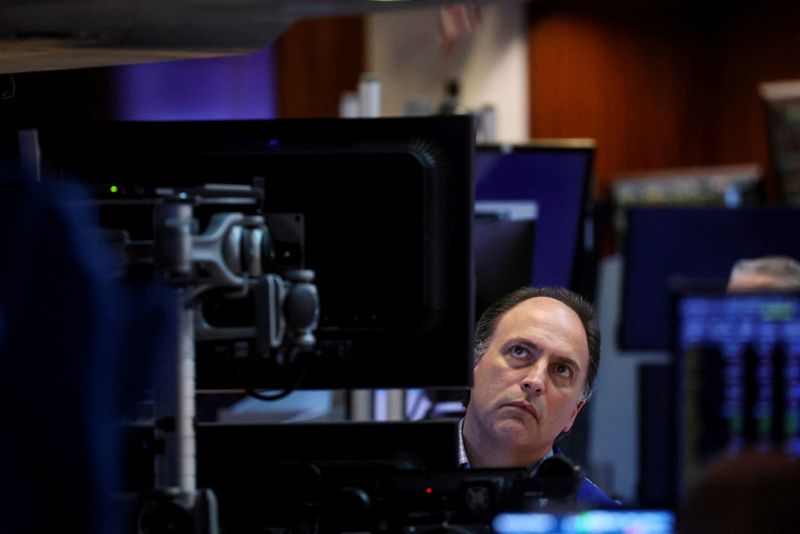
Investing.com -- Friday’s August employment report will be the main focus in the holiday-shortened week ahead as markets prepare for the Federal Reserve to begin cutting rates later this month. Meanwhile, the Bank of Canda is set to deliver another rate cut, oil prices look likely to remain under pressure and China is to release more manufacturing data. Here's your look at what's happening in markets for the week ahead.
1. Nonfarm payrolls
With the Fed gearing up to cut interest rates for the first time in years investors will be focusing their attention on Friday’s August jobs report for clues about how aggressively the central bank may move.
Fed Chair Jerome Powell has flagged it is time to start reducing interest rates, and many in the markets expect the process to begin with a 25-basis point cut at the Sept. 17-18 meeting.
Any signs of weakening in the labor market could revive fears over the prospect of a recession that roiled markets in late July-early August. The influence of the Japanese yen carry trade exacerbated the selloff.
Ahead of Friday’s report there are other updates on the health of the labor market, starting with Wednesday’s Jolts job openings report, which also contains data on layoffs. ADP data on private sector hiring will be released on Thursday, along with the weekly report on initial jobless claims.
2. Market volatility
Wall Street stocks rose, and the Dow scored a second consecutive all-time closing high on Friday on hopes for imminent Fed rate cuts.
Markets have rebounded since the early August selloff and signs that the rally is broadening is seen as an encouraging signal to investors worried about concentration in technology shares.
Investors are also putting money in less-loved value stocks and small caps, which are expected to benefit from lower interest rates.
But historically, September and October can be volatile months for stocks according to analysts at Bank of America and but any surprises from economic data could cause fresh market shocks.
3. Bank of Canada to cut again
The Bank of Canada is widely expected to deliver its third consecutive rate cut when it meets on Wednesday.
The bank has already trimmed its benchmark rate twice since June to bring it down to 4.5% and markets are currently expecting two more rate cuts this year after September.
Data on Friday showed that the Canadian economy grew at a slightly faster than expected rate in the second quarter but in a sign of coming weakness June growth was flat and Statscan said preliminary estimates showed there would also be no growth in July.
BoC Governor Tiff Macklem hinted after the bank’s July at shifting the bank's focus towards boosting the economy rather than combating inflation.
4. Oil prices under pressure
Oil prices ended the week lower on Friday and notched up hefty monthly losses as expectations for an increase in OPEC+ supply starting in October weighed.
Brent crude futures for October delivery, which expired on Friday, settled $1.14 lower at $78.80 a barrel, marking a decline of 0.3% for the week and 2.4% for the month.
U.S. West Texas Intermediate crude futures settled down $2.36 at $73.55, a drop of 1.7% in the week and a 3.6% decline in August.
Reuters reported Friday that OPEC+ is sticking to plans to increase output from next month as Libyan outages and pledged cuts by some members to compensate for overproduction offsets the impact of sluggish demand.
Uncertainty around expected rate cuts from the Fed also weighed as strong consumer spending data on Friday argued against a faster pace of easing. Lower rates can boost economic growth and demand for oil.
5. China data
China is to release August Caixin manufacturing PMI data on Monday which is expected to tick back into expansion territory after contracting in July.
Government data on Saturday showed that Chinese manufacturing activity sank to a six-month low in August as factory gate prices tumbled and owners struggled for orders, keeping up pressure on Beijing for more economic stimulus measures to bolster household demand.
Following a weak performance in the second quarter, the world’s second-largest economy continued to lose momentum in July.
Policymakers have indicated a shift from their traditional strategy of investing heavily in infrastructure projects, instead focusing stimulus efforts directly on households.
--Reuters contributed reporting
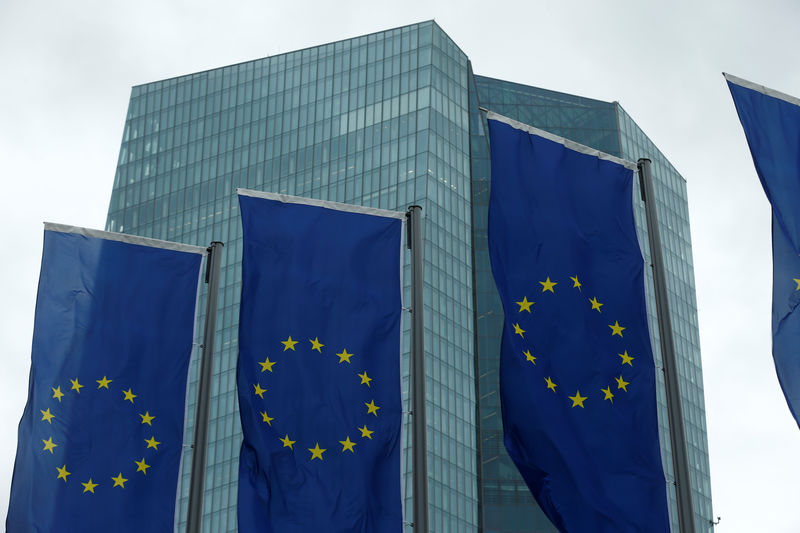
The upcoming U.S. presidential election could have notable implications for the European economy, particularly in the areas of trade and defense, UBS discussed in a report released Wednesday.
According to the investment bank, the race has gained momentum following Kamala Harris's entry, with her campaign surpassing Donald Trump's in key areas such as fundraising and poll performance. While the election's outcome remains uncertain, the potential impacts on Europe are becoming clearer.
Trade is expected to be a major concern for Europe, regardless of who wins the White House.
The U.S. is the European Union's largest trading partner, and any shift in U.S. trade policy could ripple across the continent.
“Our expectation is that under any scenario, there is a very low chance of a significant trade deal between the EU and the US,” UBS’s report states.
Instead, attention will likely focus on potential protectionist measures, particularly under a Trump administration. His campaign has floated extreme tariff measures, such as a 10% tariff on all imports, which could be used as leverage in negotiations to reduce the trade deficit and promote U.S. manufacturing.
A Harris presidency, in contrast, is expected to maintain continuity in trade and defense policies, which could prove less disruptive for European investors.
UBS suggests that "a Harris presidency should largely represent continuity and potentially a more predictable policy path on defense and trade." This stability could mitigate risks to economic growth in Europe, providing a more favorable environment for investment.
On defense, European nations are already preparing for a future where U.S. support cannot be taken for granted.
The report highlights that "irrespective of the outcome of November’s presidential ballot, European countries are already aware that they need to devote more resources to defending themselves."
This is particularly pressing given the recent increases in defense spending due to the energy crisis and the conflict in Ukraine. A Trump victory might accelerate this need, potentially straining European budgets, while a Harris administration could offer more time to adjust.
“In addition, if Europe were to divert more funding to Ukraine to make up for waning US support, we could see additional strains on finances in the absence of an end to the conflict,” UBS continued.
“Even in countries with relatively healthy finances such as Germany, political pressures are starting to raise questions about how willing and able Europe is to run larger-than-usual deficits.”
Overall, UBS believes that the U.S. election will influence the timing of European defense spending more than the ultimate direction.
A Trump presidency could accelerate the need for increased spending, while a Harris presidency may allow for more gradual adjustments. Though immediate spending could strain budgets due to Europe's limited defense manufacturing, UBS believes long-term economic benefits might arise from enhanced capacity and innovation in the sector.
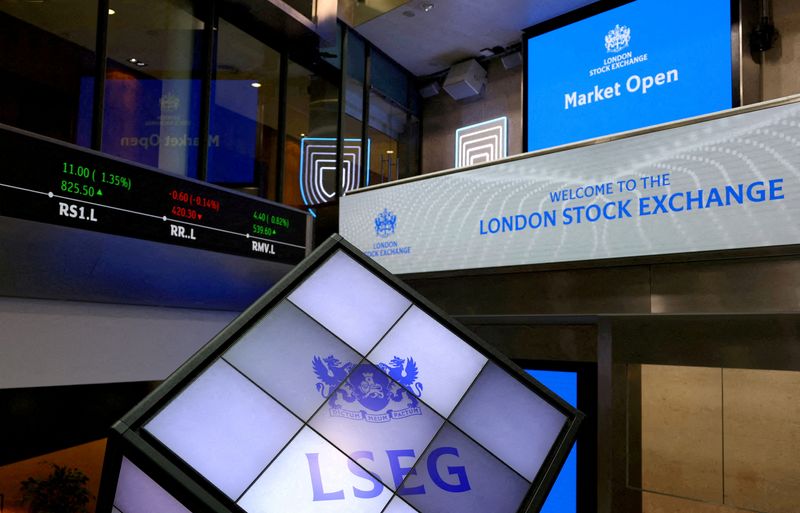
(Reuters) - UK's main stock index hit a three-month high on Friday, set to eke out gains for the topsy-turvy month, with bank shares in the lead ahead of crucial global economic data that could shed further light on the pace of rate cuts by top central banks.
The blue-chip FTSE 100 index was up 0.3% as of 0706 GMT, on track for its second straight monthly gain and third consecutive weekly advance.
The domestically-focused mid-cap FTSE 250 rose 0.2%, but eyed a monthly decline.
The pharmaceutical sector was the top monthly sectoral gainer, while personal goods shares were the worst hit.
On the day, lenders Close Brothers Group and HSBC steered the banks index, rising 0.8% to the top of the bourse, while telecommunication and media stocks were the biggest laggards.
August marks a turbulent month for financial markets globally as concerns over a likely U.S. recession rocked risky assets, with unwinding of yen-funded carry trades also elevating market volatility. However, relief trickled in eventually as the Federal Reserve hinted at an imminent interest rate cut.
The focus now turns to the U.S. inflation report, which is keenly monitored by the Fed, and the euro zone's flash inflation data, both due later in the day.
As for monetary policy bets, the Bank of England is seen keeping interest rates high for longer than in the U.S. and the euro zone. While the Fed and the European Central Bank are expected to cut in September, the BoE is seen holding rates, LSEG data showed.
Back home, house prices unexpectedly fell by 0.2% on-month in August but were 2.4% higher than a year earlier, Nationwide Building Society data showed.
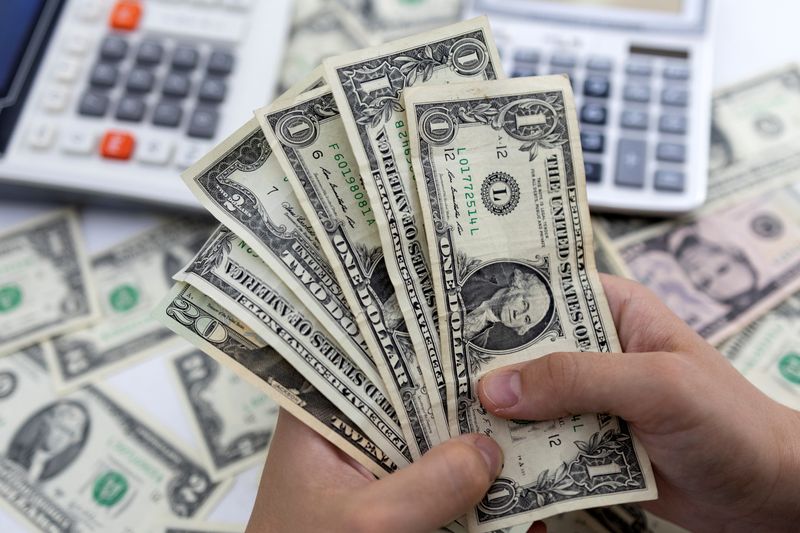
By Kevin Buckland
TOKYO (Reuters) -The dollar traded near a one-week high versus major peers on Friday, on track to snap a five-week losing streak, after robust economic data pared bets for aggressive Federal Reserve interest rate cuts.
The euro languished close to a two-week low to the dollar as cooling inflation in Germany and Spain boosted the case for European Central Bank easing.
The yen held near the closely watched 145 per dollar level after weakening on Thursday, as the greenback tracked a rise in U.S. Treasury yields.
The Japanese currency largely ignored data on Friday showing core consumer prices in Tokyo climbing at a faster-than-expected 2.4% in August, again topping the Bank of Japan's 2% target, although a measure that also strips out energy costs rose by just 1.6%.
Overnight, U.S. data showed gross domestic product (GDP) grew a 3.0% annualised rate in the second quarter, an upward revision from the 2.8% rate reported last month. Economists polled by Reuters had forecast GDP would be unrevised.
"That's been the market mover from the price action overnight, particularly when you look at currencies and U.S. Treasury yields," said Rodrigo Catril, senior FX strategist at National Australia Bank (OTC:NABZY), referring to the GDP reading.
"The takeaway there - the highlight - is that the consumer was stronger than had previously been thought," he added. "The exceptionalism of the U.S. was still evident in Q2."
Traders now more strongly favour a quarter-point Fed rate reduction on Sept. 18, laying only 34% odds of a 50-basis point (bp) cut, down from 38% a day earlier, according to the CME Group's (NASDAQ:CME) FedWatch Tool.
The U.S. dollar index - which measures the currency against a basket of six major peers - was little changed at 101.40 as of 0505 GMT, after rising 0.36% on Thursday and touching the highest since Aug. 22 at 101.58.
It is on course for a 0.7% gain this week, which would be its best week since the start of April. Over August though, it is set for a drop of about 2.5%, which would be its worst month since November.
The dollar eased 0.13% to 144.80 yen, after rising as high as 145.55 overnight for the first time since Aug. 23.
The euro was flat at $1.10755 and dropped as low as $1.10555 on Thursday. Later in the day, more consumer inflation readings from around Europe are due, including France, Italy and the euro zone as a whole.
The United States also sees the release of the core personal consumption expenditures (PCE) price index, the Fed's preferred inflation gauge.
Sterling was steady at $1.3165 after dipping to $1.3146 overnight for the first time since Aug. 23.
The Australian and New Zealand dollars hung near their highest levels this year, with recent data pointing to less need for imminent rate cuts.
The Aussie rose slightly to $0.68015 after hitting the highest since Jan. 2 at $0.6824 a day earlier, as it continued to draw support from hotter-than-expected consumer price figures this week. The currency shrugged off an unexpected stagnation in retail sales data on Friday.
New Zealand's kiwi added 0.08% to $0.6262, after reaching $0.6298 on Thursday for the first time since Jan. 2. A survey of consumers on Friday showed a pick-up from deep lows in August, after business confidence surged to the highest in a decade, a survey showed the previous day.
China's yuan firmed to a two-month high on Friday, heading for its biggest monthly jump since November, amid growing corporate demand for the Chinese currency as expectations heighten for U.S. rate cuts.
Spot yuan strengthened as far as 7.0895 per dollar before last changing hands at 7.0913, on track for a rise of about 2% for August.
"In the short term, we cannot rule out the possibility of a 'stampede' for currency conversion" that could boost the yuan above 7.0 per dollar, China International Capital Corp (CICC) said in a note.

By Stella Qiu
SYDNEY (Reuters) -Australian retail sales were flat in July after two months of upbeat results, showing large-scale tax cuts were yet to boost spending and firming expectations the next move in interest rates will be down.
Data from the Australian Bureau of Statistics (ABS) on Friday showed retail sales were unchanged in July month-on-month, slowing from the 0.5% rise in June. Analysts had expected a 0.3% increase in July.
Sales rose 2.3% from a year earlier, slowing from previous month's 2.9% as consumers grappled with inflation and high mortgage rates. That was a weak result compared with the country's population growth of about 2.6%.
Spending on clothes and at department stores took a hit, down 0.6% and 0.5% month-on-month, respectively, in July, while cafes, restaurants and takeaway food all saw a drop of 0.2% as shoppers turned frugal.
Food retailing was the only category that saw an increase, up 0.2%. Indeed, Australian grocers Coles and Woolworths both posted decent profits.
"Overall, it's clear there was little momentum behind consumer spending at the start of the quarter. And while it is early days, the data broadly reinforce our view that Australian households are not rushing to spend their newfound tax cuts," said Abhijit Surya, Australia and New Zealand economist at Capital Economics.
"At the margin, the weakness in household consumption raises the risk that the RBA will cut rates before Q2 2025 as we're currently forecasting."
This weakness is the result of high interest rates with the Reserve Bank of Australia (RBA) raising rates by 425 basis points to 4.35% since May 2022 to tame inflation, which ran at 3.5% in July, above the bank's 2-3% target band.
Policymakers have ruled out a near-term rate cut, wary that consumption could pick up more than expected as real incomes turn positive thanks to the government's sweeping tax cuts in July, giving average wage earners an extra A$1,500 a year.
House prices have also been hitting record highs this year as a rush of migrants stretch limited supply, increasing the wealth of home owners.
Recent bank data on card transactions suggests July was sluggish, with Westpac observing consumers are mostly sitting on the extra cash from tax cuts rather than spending it and the third quarter would be likely another soft quarter.
Markets have been scaling back bets for a rate cut this year after July inflation slightly beat expectations. A first easing in December is no longer a done deal, with just a 80% probability.

By Ricardo Brito and Luana Maria Benedito
BRASILIA/SAO PAULO (Reuters) - Social media giant X said it expected Brazil's top court to order it to shut down late Thursday, as a pitched legal battle played out over compliance with local laws and owner Elon Musk's insistence the platform is being punished for resisting censorship.
The popular social media platform posted the announcement from its global affairs account, saying it expected Supreme Court Judge Alexandre de Moraes to order the shutdown "soon," moments after a court-imposed deadline passed.
Earlier on Thursday, the Supreme Court blocked the local bank accounts of billionaire Musk's Starlink satellite internet firm, in which he owns a 40% stake, while the underlying feud over X put it on the brink of being shuttered in one of its top markets.
The two firms are part of Musk's sprawling business empire which also includes rocket company SpaceX and electric car giant Tesla (NASDAQ:TSLA). The billionaire is the owner of X and the CEO of Tesla.
Starlink had previously confirmed it received an order from the judge that prevents the company from conducting financial transactions in Brazil.
In a Thursday night post on X, Musk lashed out at Moraes, decrying the ruling to block Starlink as illegal and that it would "improperly" punish other shareholders as well as ordinary Brazilians.
Signed by Moraes, the court's decision to sanction Starlink is a response to the lack of legal representatives in Brazil for X, a Supreme Court source told Reuters.
The decision to freeze Starlink's bank accounts also stems from a separate dispute over unpaid fines that X was ordered to pay due to its failure to turn over some documents. Local newspaper Folha has reported the fines total at least 20 million reais ($3.6 million), but Reuters was not able to confirm the amount.
The Supreme Court had set a deadline for X to name its legal representative in Brazil by shortly after 8:00 p.m. (2300 GMT) on Thursday.
At issue in the intensifying dispute is whether Moraes can order X to block certain accounts accused of spreading lies and distortions, a request Musk has denounced as censorship.
Most of the accounts ordered blocked are run by backers of far-right former President Jair Bolsonaro, some of which deny he lost his 2022 reelection bid.
Brazilian law requires all internet companies to have a legal representative in the country who can receive judicial orders and otherwise be legally responsible for the business.
Late Wednesday, Moraes signed an order for X to name its legal representative or face suspension in the country.
In a previous post, Musk complained that Moraes "is an outright criminal of the worst kind, masquerading as a judge."
Starlink, in its own post, accused the judge of secretly issuing the order without due process.
JUDGE V. BILLIONAIRE
The cumulative digital and legal disputes could cause X to lose one of its largest and most coveted markets, at a time when Musk has struggled with advertising revenue for the platform.
Earlier this month, X announced it would close operations and fire its staff in Latin America's largest economy due to what it called "censorship orders" from Moraes, while keeping its service available for Brazilian users.
At the time, X claimed Moraes secretly threatened one of the company's legal representatives in Brazil with arrest if it did not comply with legal orders to take down some content.
In Wednesday's ruling, Moraes stressed that companies that do not respect local laws or the confidentiality of private information could have their activities temporarily suspended.
The Supreme Court posted a screen shot of Wednesday's court decision on its X account, tagging Musk's and X's global government affairs accounts.
Moraes ordered X to block certain accounts earlier this year implicated in investigations of so-called digital militias accused of spreading distortions and hate during Bolsonaro's term in office.
After Musk challenged that decision and said he would reactivate accounts on X that the judge had ordered blocked, Moraes opened an April inquiry into Musk's businesses.
X representatives eventually reversed course and told the Supreme Court the social media giant would obey the rulings. In April, however, Moraes asked X to explain why it had not fully complied with his decisions.
In response, X lawyers cited "operational faults" that had allowed users ordered blocked to stay active on the platform.
Many Brazilians took to X on Thursday to make light of the saga, including thousands who posted creative "memes" spotlighting the hard-charging judge and the billionaire.
Some X users criticized the ruling signed by Moraes, arguing he was undermining freedom of speech, while others sided with Moraes, insisting that Musk must comply with Brazilian law.
X, formerly known as Twitter, is widely used in Brazil, and is an important means of communication in particular for politicians.
($1 = 5.6286 reais)

WASHINGTON (Reuters) - Contracts to buy U.S. previously owned homes dropped to a record low in July as higher prices and borrowing costs drove potential buyers from the market.
The National Association of Realtors (NAR) said on Thursday its Pending Home Sales Index, based on signed contracts, fell 5.5% last month to 70.2, the lowest reading since the series started in 2001. Pending home sales fell in all four regions last month. Economists polled by Reuters had forecast contracts, which become sales after a month or two, would rise 0.4%.
Pending home sales plummeted 8.5% on a year-on-year basis in July.
"The positive impact of job growth and higher inventory could not overcome affordability challenges and some degree of wait-and-see related to the upcoming U.S. presidential election," said Lawrence Yun, the NAR's chief economist.
Sales activity is likely to remain subdued. A Conference Board survey on Tuesday showed the share of consumers planning to buy a house over the next six months in August was the smallest since early 2013.
House prices remain elevated, though the pace of increases has slowed. The Federal Housing Finance Agency reported on Tuesday that house prices rose 5.1% on a year-on-year basis in June, the smallest rise in nearly a year, after advancing 5.9% in May.

